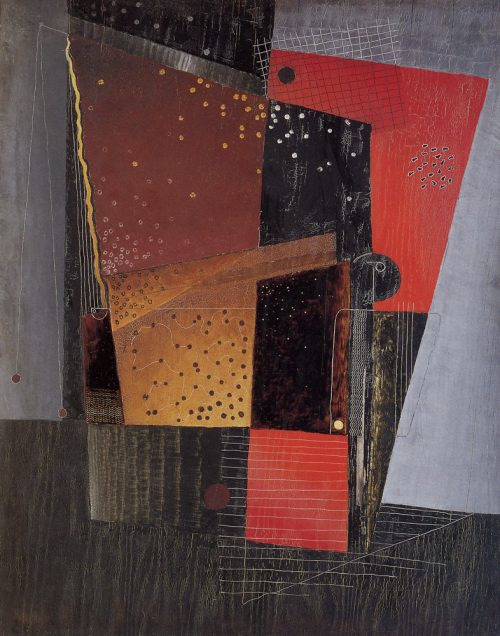Prior to becoming a photographer and filmmaker, Alfred Ehrhardt was a musician, painter, and art educator. In 1924, he took up a position as a teacher for music and art at the Landerziehungsheim Max Bondy, a progressive educational institution in Gandersheim (later Marienau). In 1926, he painted the crypt at the Lamspringe Klosterkirche with an iconographic program detailing the monastery’s history in an Expressionist and New Objectivity style. His murals were painted over in white by the Nazis in 1938, but have since been restored by the Alfred Ehrhardt Stiftung.
For the 1928–29 winter semester Ehrhardt went to the Bauhaus in Dessau. Upon his return, he applied what he had learned there to his classroom instruction. Based on this experimental experience, Max Sauerlandt invited him to teach a course focused on studying the various characteristics of materials at the Landeskunstschule Hamburg, where he and Fritz Schleifer established the first preliminary course in Germany outside the Bauhaus.
In 1931 Alfred Ehrhardt was granted a solo exhibition of his paintings, drawings, and prints at the Hamburger Kunstverein. It made clear how formative his time at the Bauhaus was as well as the influence of Wassily Kandinsky, Paul Klee, Oskar Schlemmer, or Lyonel Feininger on his work. Despite the impact of his role models, however, Ehrhardt’s liberating of nature from all unessential elements allowed him to discover his own independent, archaically stylized mode of expression. Inspired by Wassily Kandinsky, Ehrhardt’s declared intent is the spiritualization of the material world. Following Paul Klee, he sees the study of nature as the central starting point for the design of forms. Ehrhardt’s preoccupation with abstraction, archaism, form, material characteristics, structure, or rhythm will also be reflected later in his photographic and filmic work.
























